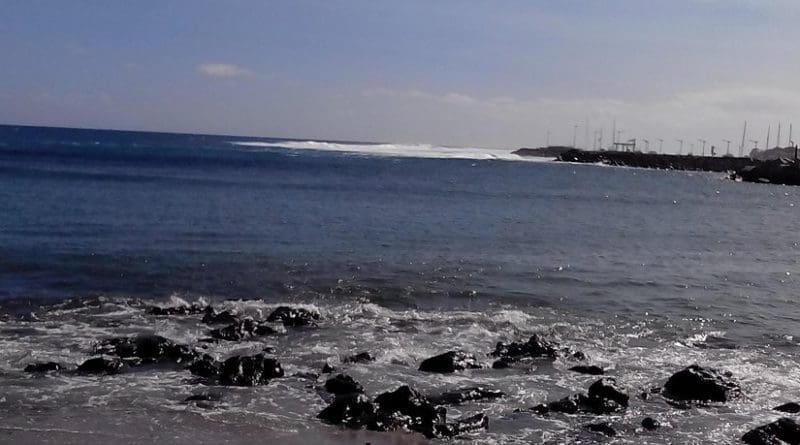Indian Ocean: Exploring Maritime Domain Awareness – Analysis
By Manohar Parrikar Institute for Defence Studies and Analyses (MP-IDSA)
By Dr Vijay Sakhuja
Attacks on maritime targets such as the USS Cole and MV Limburg off Yemen by al Qaeda, the 2008 Mumbai attacks by the Pakistan based Lashkar-e-Taiba (LeT), and the 2014 attempt on Pakistan Navy ship by al Qaeda in the Indian Subcontinent (AQIS) have exposed the weaknesses of surveillance systems and intelligence agencies of the Indian Ocean littorals. Likewise, the rise in piracy attacks in Southeast Asia and Gulf of Aden/Somalia have highlighted the sophistication of pirate communication networks, which the naval and maritime forces could not penetrate. Security agencies concur that a robust intelligence, surveillance, reconnaissance and communication network is the key to robust counter-terrorism and anti-piracy operations and can effectively reduce the risk of attack by the perpetrators.
In the Indian Ocean, three wide-area CISR networks have been set up to respond to threats and challenges posed by non-State actors such as terrorists and pirates. These networks receive vital information from multiple systems such as the Automatic Identification System (AIS), the long-range identification and tracking (LRIT), satellites and shore based Electro-optical systems and radars to enable real-time data of ships operating in the oceans.
The Information Fusion Centre (IFC) is a Republic of Singapore Navy (RSN) initiative, and was established in 2009 at the Changi Command and Control Centre (CC2C) in Singapore. It is a 24/7 regional maritime focal point and undertakes a number of activities to enhance maritime situation awareness. The IFC is a symbol of effective mechanism of ‘multi-agency co-operation and interoperability amongst national and regional maritime agencies’ and an enabler for technological and operational interoperability among maritime forces which ensures timely regional responses to crisis. The IFC is linked to nearly 45 agencies from 28 countries and manned by the RSN personnel and 30 multi-national staff called International Liaison Officers (ILOs) from 12 countries who work together to generate a maritime situation picture.
Likewise, the Information Management and Analysis Centre (IMAC) at Gurgaon in India is an Indian Navy initiative and connects national coastal radar stations and other maritime systems and collates, fuses and disseminates critical intelligence and information about ‘unusual or suspicious movements and activities at sea’ for use by Indian agencies. It is part of the National Command Control Communication Intelligence (NC3I) network and was commissioned in November 2014.
The Piracy, Maritime Awareness and Risks (PMAR), a European Union initiative for capacity-building of Eastern and Southern African/Indian Ocean (ESA-IO) region, aims to enhance maritime situational awareness and counter-piracy capability of the regional States. It provides a real-time Maritime Situational Picture (MSP) of the Western Indian Ocean and Gulf of Aden to the Regional Maritime Rescue Coordination Centre (RMRCC) under the control of Kenya Maritime Authority (KMA) in Mombasa and the Anti-Piracy Unit of the Indian Ocean Commission (IOC) in the Seychelles. The PMAR is a roll on project and will be operational for fifteen months (July 2014 and October 2015); earlier, it had focused on the Horn of Africa (2010- 2012) and Gulf of Guinea (2011- 2013).
In the past, a number of multilateral information-sharing and intelligence exchange mechanisms such as the Shared Awareness and Deconfliction (SHADE), the Contact Group for Piracy off the Coast of Somalia (CGPCS) and the Djibouti Code of Conduct (DCoC) were set up in the Indian Ocean to counter piracy in the Gulf of Aden, and maybe wound up given that only 11 incidents of piracy were reported during 2014.
While these are noteworthy initiatives, there are at least three challenges for a robust MDA in the Indian Ocean. The IFC and IMAC lack institutional and technological networking to generate a common maritime picture for the Indian Ocean countries. Further, given that maritime security is transnational and transoceanic, these are not linked to similar agencies/systems in other regions such as the MARSUR, an initiative of the European navies. Second, the PMAR is temporary in nature and would be withdrawn/shifted to another region by the EU on completion of the stipulated fifteen months. Third is the necessity of obtaining and sharing additional information about shipping given that AIS is prone to data manipulation.
As far as a pan-Indian Ocean MDA is concerned, the Indian Ocean Naval Symposium (IONS) is a useful platform to explore the above idea. After all, the idea of the IFC may have had its genesis in the 18th International Seapower Symposium at Rhode Island, US, where Chiefs of Navy of the participating countries acknowledged that information-sharing is critical for maritime domain awareness, and since then it has become a ‘common thread championed at various security dialogues and forums’.
The IMAC could consider inviting ILOs from Indian Ocean countries and enhancing multi-national naval cooperation. It is also a good idea to explore if IMAC can support regional Humanitarian Assistance and Disaster Relief (HADR) and Search and Rescue (SAR) operations, and augment environmental surveillance through situational information.

